Bean breeding improves farmers’ lives in Uganda
By Teresa Welsh | Aug. 30, 2023

Three years ago, Olivia Asinde and her husband Robert Loda lost their entire bean crop during a dismal growing season. They had to survive off the profits of their sugarcane, which takes two years to mature and occupies valuable land, displacing crops used for food.

Most households in Kabuki village rely on agriculture for their livelihoods.
Most households in Kabuki village rely on agriculture for their livelihoods.
They have about 17 acres (6.8 hectares) in Kabuki village in the Mayuge District of eastern Uganda. They had to buy beans to eat instead.
But this year, the couple, who have two children they send to school with profits from agriculture, are more hopeful for a successful crop. Despite stubbornly dry skies in the crucial spring months, their bean crop is thriving and will be ready for harvest soon.
These aren’t just any beans — they’re NARO bean 6, a variety specifically bred by scientists to withstand the increasingly challenging climatic conditions for farmers across Uganda. They planted 30 kg of the new variety, which they received because of Asinde’s membership in a local farming women’s group.
“They grow fast and have high yields,” she said of the variety they planted for the first time.
The characteristics of the beans weren’t chosen by the scientists but were selected after consultation with farming communities to meet their specific needs. Top of the list of desirable traits in Uganda is high-yielding — an all-encompassing term that means the plant can withstand the host of shocks farmers experience and still remain ripe for harvesting, including drought tolerance and pest and disease resistance.
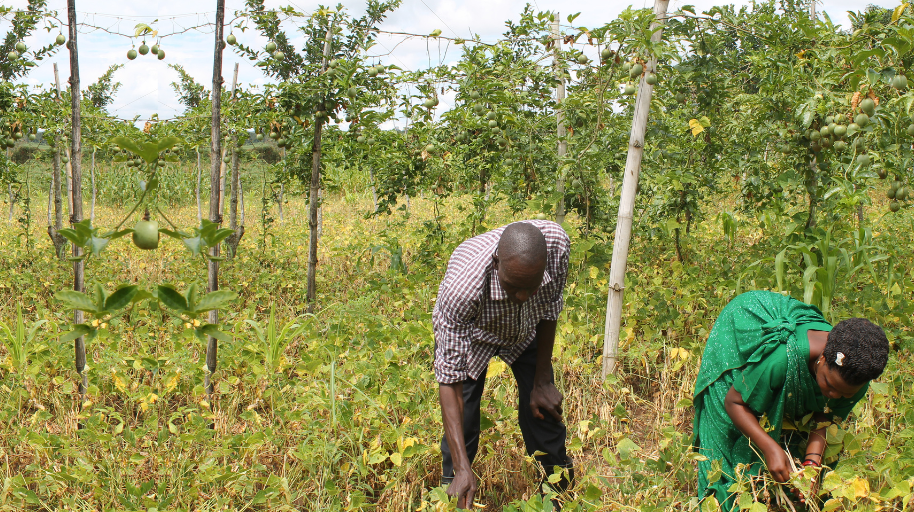
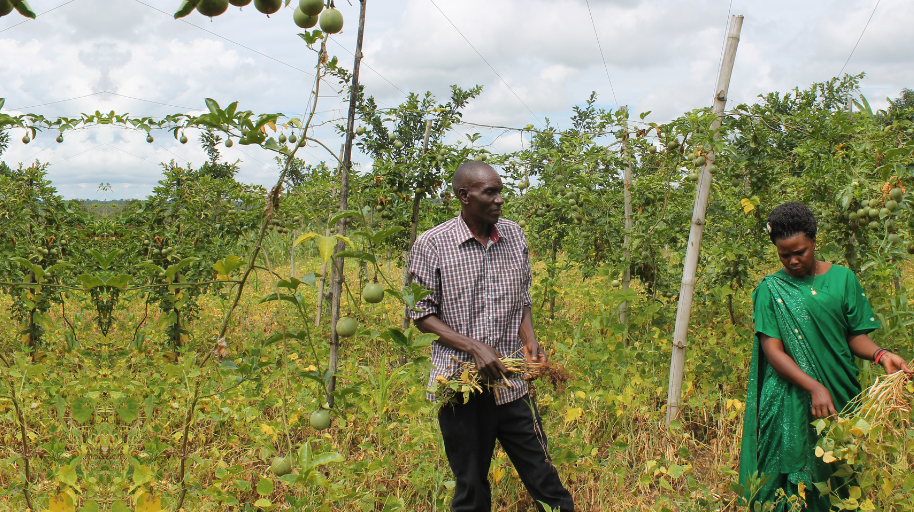
Scientists also focus on the social conditions around beans: The specific size and color preferred by certain communities, as well as how long they take to cook, and how well-suited they are to canning. They are biofortified with iron and zinc to improve nutrition.
NARO bean 6 and a host of other varieties were developed by a partnership between the National Agricultural Research Organization of Uganda, known as NARO, and scientists with the Alliance of Bioversity International-Centre for Tropical Agriculture’s Pan-African Bean Alliance, or PABRA. NARO began in the 1960s but resumed its breeding program in 1985 after a period of inactivity.
“We have strategies that we use to make sure the products or the varieties we develop don’t end on the shelves, to make sure that they actually get adopted and used by the end users: Industry, farmers, ordinary consumers,” said Pamela Paparu, a senior scientist at NARO.
“From the beginning of conception of the idea we seek to involve the end users. What do they need? And then in the process of developing it, we give them the opportunity to choose what goes forward and what doesn’t.”
The Alliance of Bioversity International and the International Center for Tropical Agriculture, or CIAT, works across 31 countries in Africa and 10 countries in Latin America. Within PABRA, the continent is split into three regions. This helps scientists better target traits for specific conditions in a country or region. Clare Mukankusi, global breeding lead of the common bean at the Alliance of Bioversity International-CIAT, said they try to prioritize the most cross-cutting characteristics because they can’t work on everything at once.
For a long time, she said, there wasn’t a lot of research conducted on beans because they were not a high-profitability crop and were mainly used for subsistence farming. There are two major types of beans grown in Uganda — large and small — but breeders have prioritized the large ones.
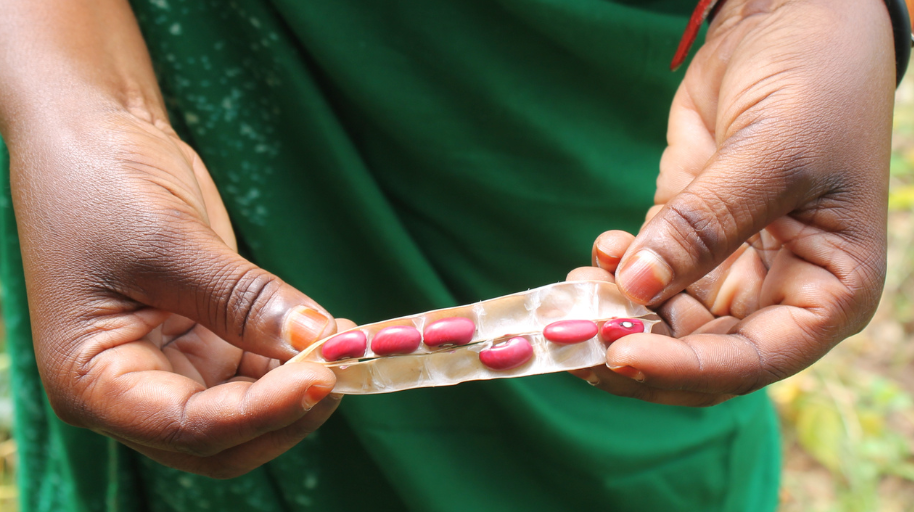
Asinde holds a pod of mature NARO bean 6.
Asinde holds a pod of mature NARO bean 6.
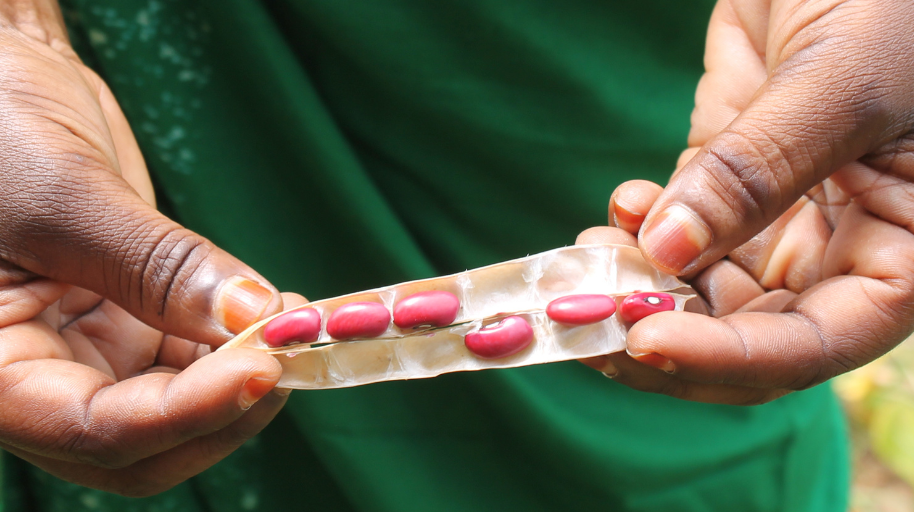
Asinde holds a pod of mature NARO bean 6.
Asinde holds a pod of mature NARO bean 6.

Asinde holds a pod of mature NARO bean 6.
Asinde holds a pod of mature NARO bean 6.
“PABRA has done a lot of promotion, promoting the benefits of beans. Before it was considered a women’s crop,” Mukankusi said. “But then we started talking about ‘what could beans do for you?’: highly nutritious, can earn you money. … Being able to say that loud, popularize it, talk to policymakers.”
And the export market has grown significantly:
Uganda produces about 1 million metric tons of beans, which are the fourth most exported commodity by volume.
The country is the second largest producer of beans in East Africa, and it exports a good portion of the crop regionally as well as to the Arab world.
Getting an exact trait is a laborious and time-consuming process: Mukankusi said that for a trait such as cooking time, they expect to do five cycles of breeding to get a bean variety to cook as quickly as they want. They’re currently in the second cycle — each one can take as long as two years — and are attempting to reduce cooking time by 30%.
“Cooking time has always been a majority priority for most of the consumers. They will always tell you beans cook long. So the idea is to try and reduce the cooking time to ensure that people, especially the women, spend less time cooking,” Mukankusi said.
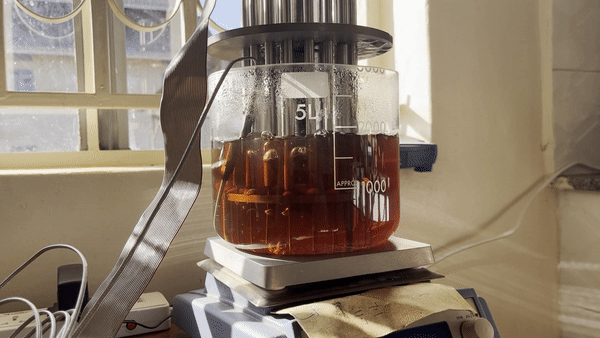
Scientists conduct experiments on varieties being bred to cook faster.
Scientists conduct experiments on varieties being bred to cook faster.
Shorter cooking time also allows for savings on fuel, improved security for women and children who have to gather it, and less exposure to inhaling harmful substances during long hours in the kitchen.
Lab tests are done to measure the cooking time for beans, with a boiling tank hooked up to a computer to record the exact time it takes each bean to get soft. Researchers want every bean to cook at the same rate, so none of them are wasted.
Scientists begin by doing genetic crosses in greenhouses, introducing the trait they’re trying to breed for into already released varieties or those available locally. When a variety looks promising, then they get taken to the field and distributed throughout the country to see how they perform in trials in the differing conditions.
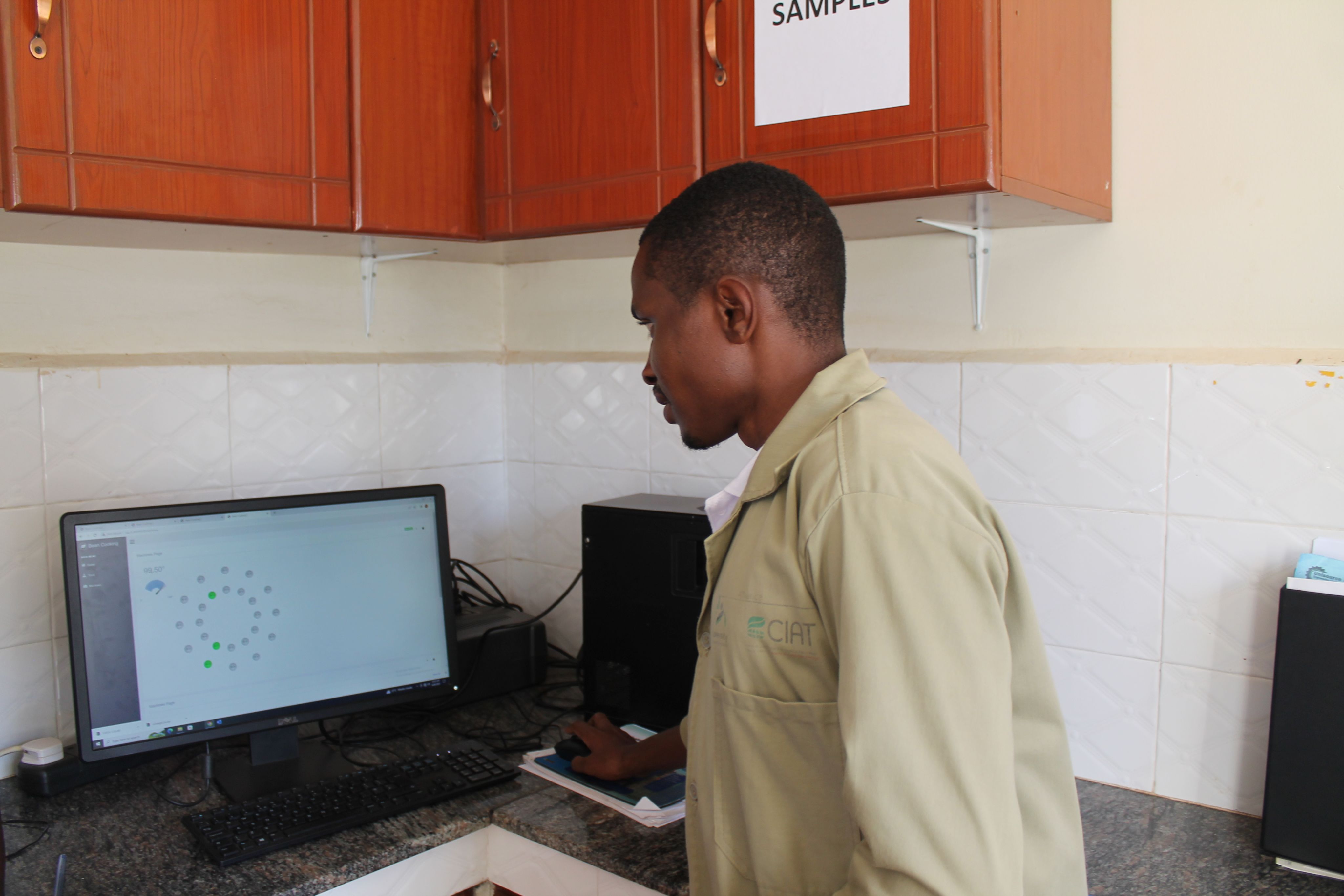
One way researchers gather feedback on these varieties is by working with farmers' groups such as the one Asinde is a member of, the Bakuseka Majja women farmers’ group. They use demonstration gardens to show farmers the new varieties, and then they are given seeds to plant on their own land.
“We are teaching them also how to do the best planting and management. … They tell us the type of growth habit they want, they will identify the maturity, how is the plant doing,” said NARO bean breeder Eunice Kesiime. “They come and harvest with us, participating — they are telling us what they want.”

Members of the Bakuseka Majja women farmers’ group gather.
Members of the Bakuseka Majja women farmers’ group gather.
Daphine Byagonda is the leader of the Bakuseka Majja women farmers’ group, which was founded in 2017 with 30 members. Now it has 80 members, including some men and youth.
They began working with NARO in 2018, and have trialed multiple varieties of beans developed by scientists. The group has consistently gotten higher yields than other farmers in the community who are planting the traditional varieties. Byagonda said this allows them to purchase household goods, food, and pay school fees.
“We used to grow our local beans, but these people give us some new methods and ideas. We wanted to practice, and as we practiced, we saw that [it] was better,” Byagonda said, noting that the extra income she’s earned has allowed her to buy her own land.
“I feel big,” she said.
The community also likes that the beans have high iron, so pregnant women can eat them and no longer have to spend money on iron pills. Children are also experiencing less anemia, and now regularly go to school and have clothes to wear.
When farmers in the community have a variety that is successful, they share the seeds with their friends.
Uganda has a large agricultural extension program, and researchers are sure to involve extension workers, who help bring new technical knowledge to farmers, in their trials because they will be present in the communities long after the scientists are gone. Getting their buy-in can also be key to the adoption of a new variety, Paparu said.
“I strongly believe if you involve them in making choices for themselves, they are most likely going to continue with those choices once you’re gone,” Paparu said. “If they choose it, they will continue with it.”
Mukankusi has been with CIAT since 2002, and in that time she’s observed stark differences in the climate at their facility in Kawanda and how that affects when and what they can plant.
“Here in Uganda what I’ve noticed is there’s times where you don’t expect things and they happen,” Mukanku said. “Sometimes you expect a good season and the rain just stops and the crop is still very young in the field.”
Irrigation systems are uncommon for smallholder farmers in Uganda because they are too expensive, and had never been required before the climate began to change. Farmers had been able to rely on rains at the right time to ensure a successful harvest, but now relying on breeders to design seeds that can thrive in the new conditions is a more viable option than installing irrigation systems.
Beans are highly affected by diseases, and using breeding to build resistance among new varieties can be a moving target, Mukankusi said. What causes disease — whether fungal, bacterial, or viral — is constantly changing. Scientists are always trying to understand what’s happening in farmer’s fields to be sure their work in the lab reflects the latest challenges.
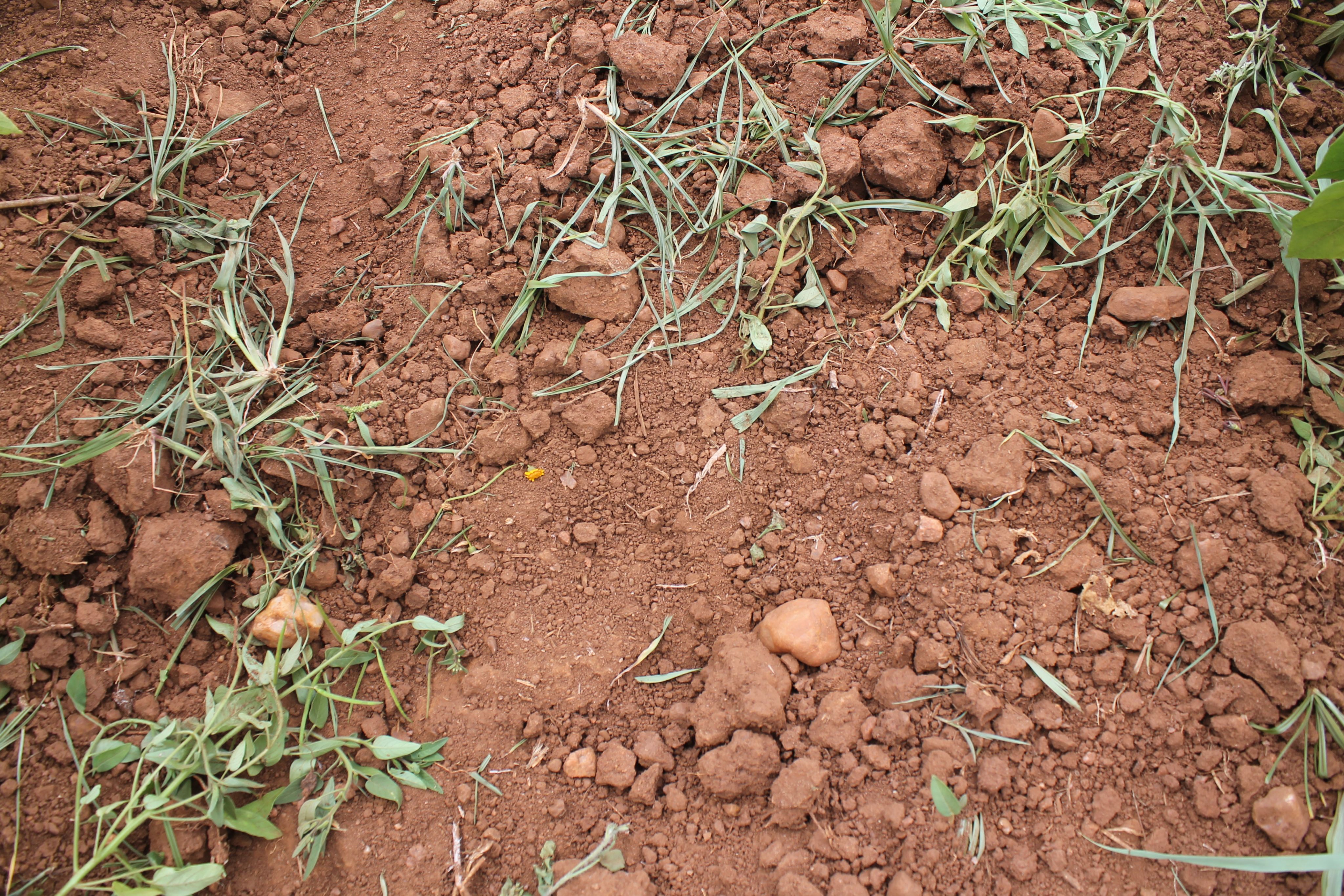
Uganda had an abnormally dry rainy season this year.
Uganda had an abnormally dry rainy season this year.
They need to be able to act very quickly so a disease that’s spreading fast doesn’t wipe out an entire crop. In 2003, Mukankusi said, root rot killed all the beans.
“The research that we do here is always geared to the present but also to the future,” Mukankusi said. “We’re always collaborating with the climate scientists, that always provide information that it’s going to get hotter, it’s going to get wetter.”
“What does that mean for beans? More diseases. So we have to ramp up our disease resistant breeding,” Mukankusi continued.
Christine Joyce Kanyago is also experimenting with a new bean variety for the first time this season. She’s a member of the women’s group in Mayuge District, farming 30 acres that were left to her after her father passed away. After a career as a midwife, Kanyago began growing crops including groundnuts, maize, bananas, vanilla, and cocoa. She supports several family members with her earnings, including paying a grandson’s school fees.
Growing the new bean variety has been successful despite the harsh growing conditions.
“Our problem here is sunshine,” Kanyago said. “It is not predictable.”


To distribute the seeds it develops, NARO has a business arm called NARO Holdings, which commercializes the technology developed at the labs. They develop licensing arrangements with seed companies to distribute the new varieties and also have contracts with farmers’ groups and individual commercial farmers.
“The willingness to pay for quality seed is low. And now if you make the price very expensive they aren’t going to buy the seed,” said Chris Tanansi Muwanika, general manager of NARO Holdings. “The main challenge is volumes being small but also demand being erratic.”
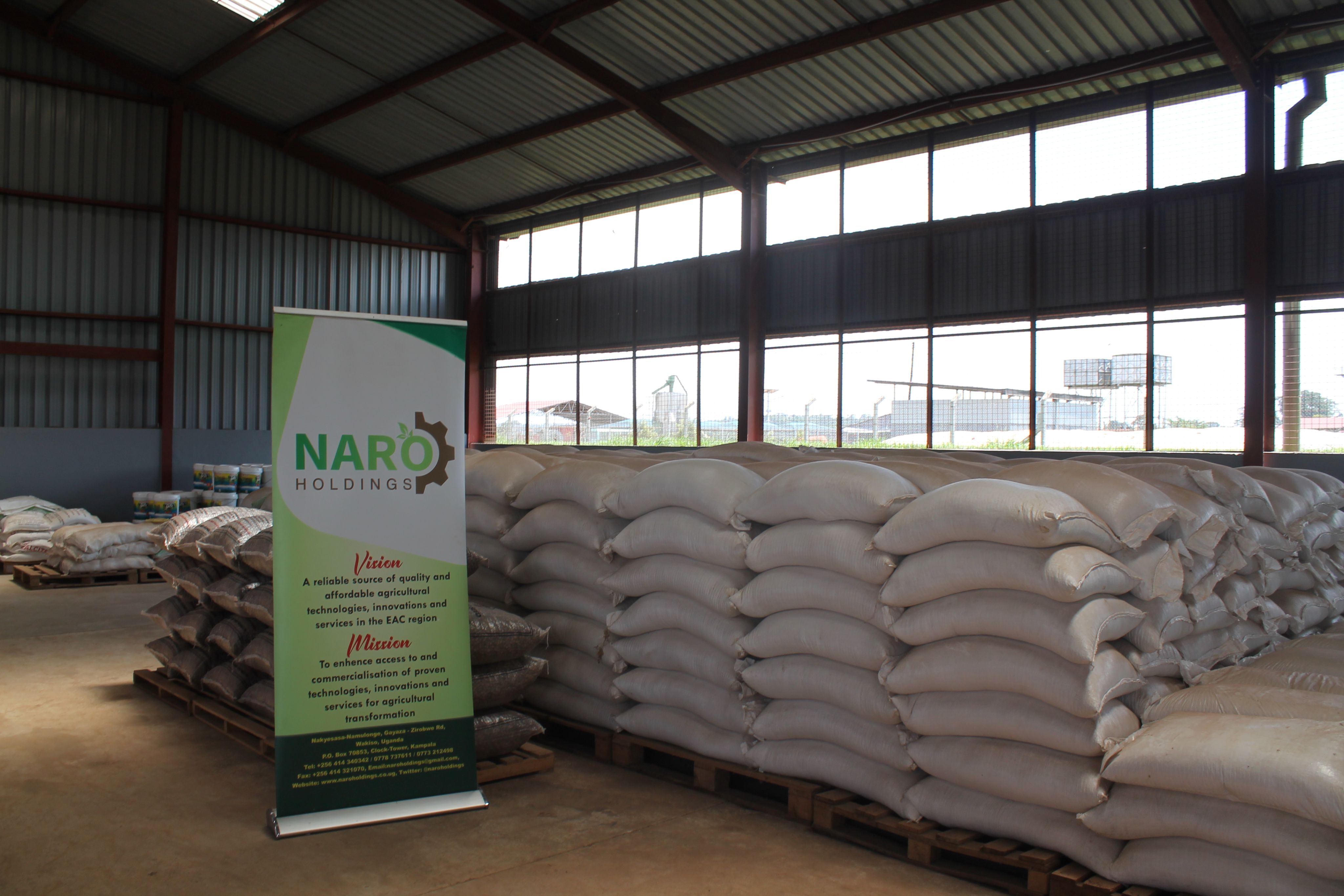
NARO Holdings commercializes the seeds developed by researchers at NARO.
NARO Holdings commercializes the seeds developed by researchers at NARO.
But sales of bean seeds have been growing steadily, Muwanika said: In 2018, NARO Holdings was selling less than 5 tons a season. Now, they sell over 100 tons.
All of the breeding work is preserved in a gene bank on the grounds of the NARO facility in Kawanda. The stock is tracked electronically, so they know how much of which seeds are stored there. It currently houses more than 8,000 bean varieties, most of which were developed at the facility. Some came from Colombia, where CIAT is headquartered, or other regions of Uganda.
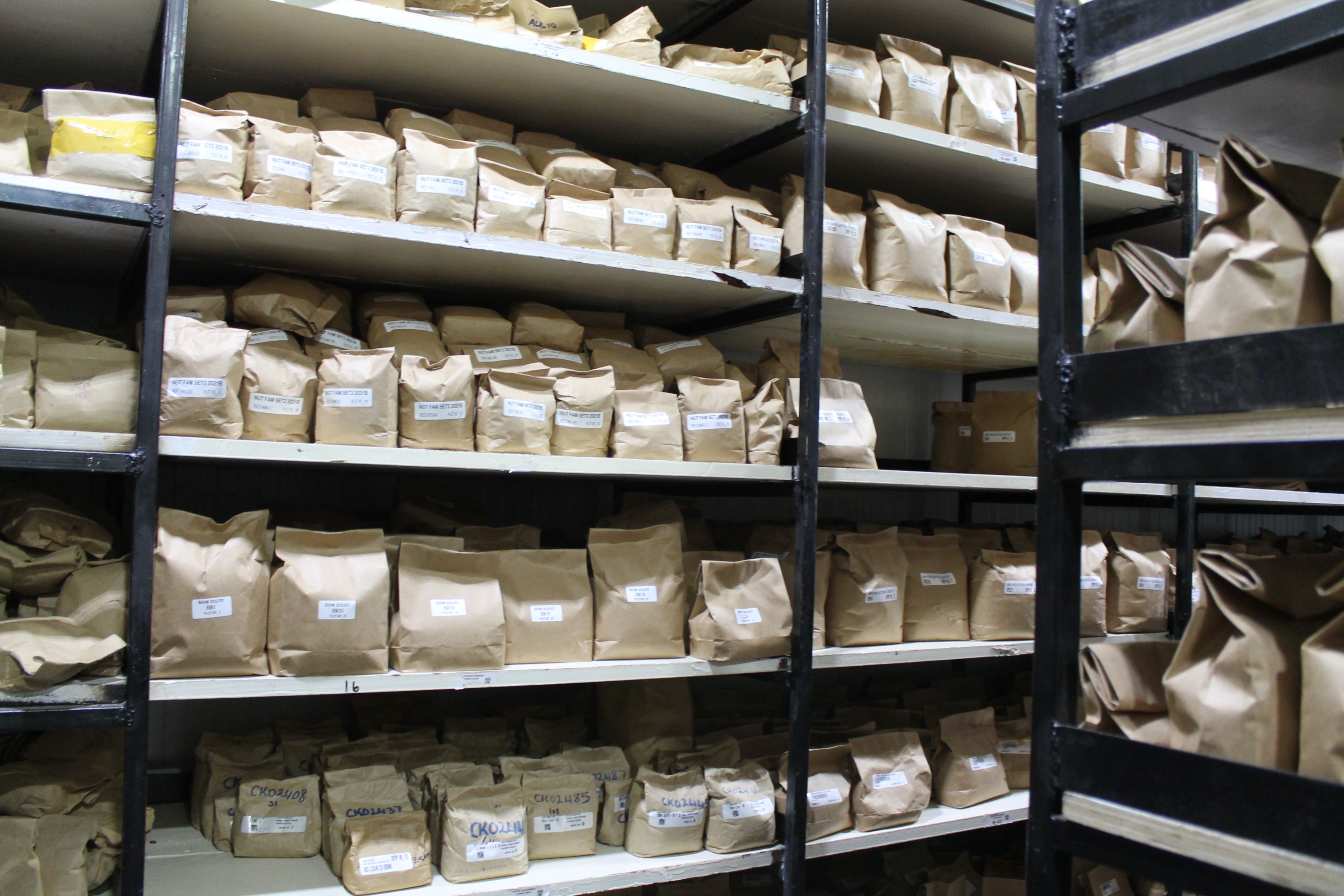
Conditions in the gene bank, a cold room that is around 15 degrees Celsius, allow seeds to be kept in a paper bag for three years. If they’re vacuum sealed, they could last up to 50 years. But the goal is to build a facility in Uganda that can keep seeds essentially indefinitely at temperatures of -5 degrees Celsius that acts as a regional gene bank for East Africa for beans, and also spices and maize.

“But it’s too expensive,” Mukankusi said.
It is difficult to spur investment in developing new seed varieties because farmers don’t often have to buy them: Beans from the last harvest are planted and grow new plants. With a successful harvest, they have enough to use as seeds for the next year’s crop.
This means it isn’t lucrative for seed companies to invest in the type of research being done by NARO and PABRA. When seed companies do develop their own varieties, they can become out of reach for farmers.
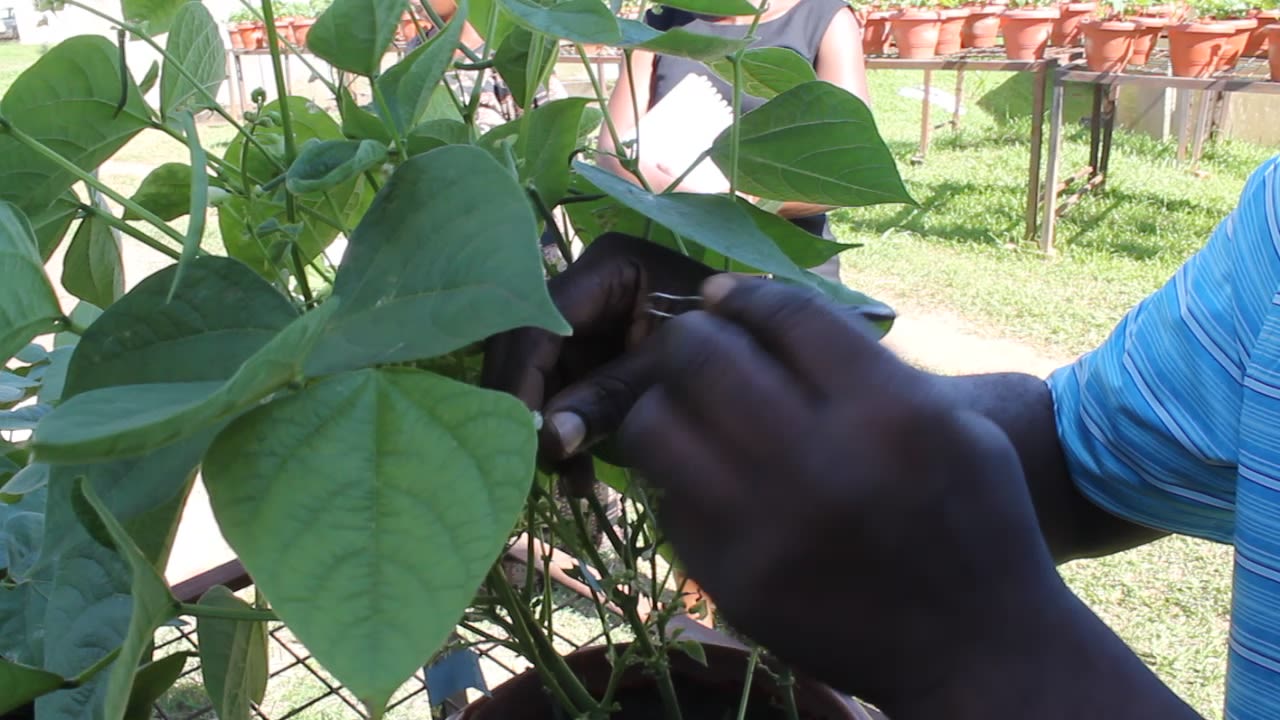
“It’s an irony: When you do biofortification you say you want to release varieties — high iron, for women, children, vulnerable [people] — but when this variety comes up, seed companies license it and only for the export market, so that the people you intended it [for] cannot afford it,” Mukankusi said.
She said it is very gratifying to see farmers take up seeds developed by NARO and PABRA, and said it provides needed energy in a research process that can drag on for years and can feel disconnected from its impact in farmer’s fields.
“I want to see, is it making sense?” Mukankusi said of when she visits farmers. “They know what’s going on and they know what they want. It’s very satisfying.”
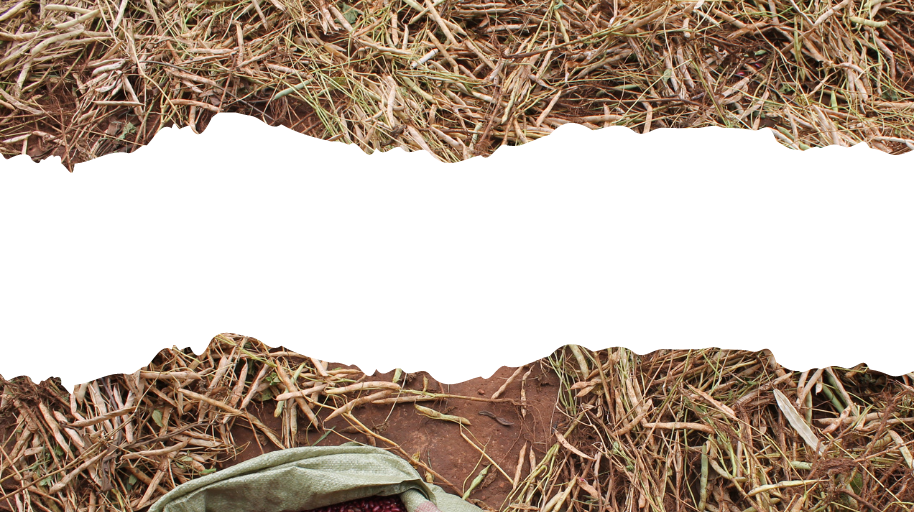
The Alliance of Bioversity-International Centre for Tropical Agriculture facilitated Devex's travel to Uganda.
Devex retains full editorial control of all content.
Photos by: Teresa Welsh
Produced by: Patricia Guerrero
